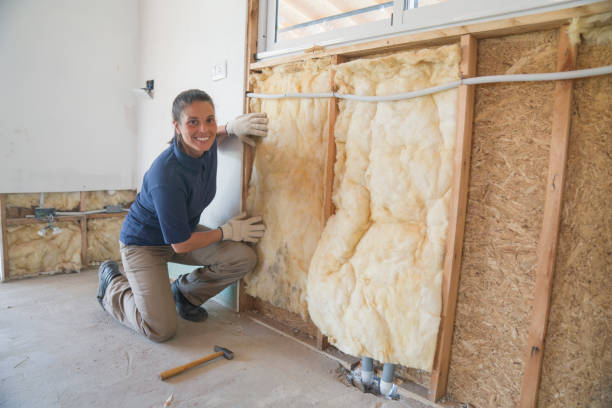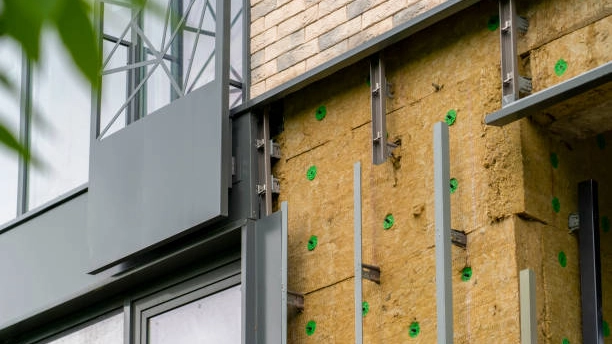How to Install Insulation in Wall: A Step-by-Step Guide
Discover how to install insulation in walls efficiently with our step-by-step guide at FUNAS. Enhance energy efficiency and comfort in your home by following our expert instructions. Learn essential tips and techniques that ensure optimal insulation performance. Visit FUNAS to master this skill with ease and confidence.
- How to Install Insulation in Wall: A Complete Guide
- Why Should You Insulate Your Walls?
- Materials and Tools Required for Wall Insulation
- Materials:
- Tools:
- How to Install Insulation in Walls: Step-by-Step Instructions
- Step 1: Preparation and Safety
- Step 2: Measure and Cut the Insulation
- Step 3: Installing the Insulation
- Conclusion
- Common FAQs About Wall Insulation
- 1. How much insulation is needed for walls?
- 2. Can I install insulation in existing walls?
- 3. What is the best insulation for walls?
- 4. How long does it take to install wall insulation?
How to Install Insulation in Wall: A Complete Guide
Insulating your walls is one of the most effective ways to improve energy efficiency, reduce heating and cooling costs, and create a more comfortable living environment. Whether you are upgrading your insulation or tackling a DIY project, knowing the correct method and materials is crucial for success. In this guide, we will walk you through how to install insulation in your walls, from choosing the right material to the final steps.
Why Should You Insulate Your Walls?
Wall insulation is key to keeping your home warm in winter and cool in summer. It helps to maintain a stable indoor temperature and reduces the workload of heating and cooling systems. By reducing air leaks and heat transfer, insulation also minimizes your energy bills. Additionally, proper wall insulation can help reduce noise pollution from outside and between rooms, making your home more peaceful.
Materials and Tools Required for Wall Insulation

Before beginning your wall insulation project, it's important to gather the necessary materials and tools. There are different types of insulation materials you can choose from depending on your needs and the specific requirements of your walls. Some of the most common materials include fiberglass, spray foam, and cellulose. Below is a breakdown of the materials and tools you'll need:
Materials:
- Fiberglass Insulation: Widely used, affordable, and easy to install.
- Spray Foam Insulation: Expensive but highly effective for air sealing and insulating.
- Cellulose Insulation: Made from recycled paper, it’s an eco-friendly option.
- Rigid Foam Board Insulation: Offers high insulating values and is best for exterior walls.
- Batt Insulation: Pre-cut, easy to install in between studs.
Tools:
- -Tape measure
- -Utility knife or insulation saw
- -Stapler or staple gun
- -Protective gloves, glasses, and mask
- -Ladder or scaffolding (if needed)
- -Insulation supports or staples
How to Install Insulation in Walls: Step-by-Step Instructions

Step 1: Preparation and Safety
Before starting, clear the area where you will be working. If you are insulating exterior walls, ensure the siding or drywall is removed. Safety is essential, so wear gloves, goggles, and a mask to protect yourself from irritation caused by insulation materials. Make sure the area is well ventilated to avoid inhaling any particles.
Step 2: Measure and Cut the Insulation
Measure the width and height of the wall cavities. Cut the insulation material to fit snugly between the studs. For fiberglass batt insulation, use a utility knife to make clean, straight cuts. Ensure the insulation fits tightly to avoid any gaps that would reduce its effectiveness. If you’re using spray foam or blown-in insulation, ensure all the cavities are filled.
Step 3: Installing the Insulation
If you're using batt insulation, insert the insulation into the wall cavity between the studs. Push it in gently to ensure it fills the space without gaps. For spray foam, follow the manufacturer's instructions to apply it evenly in the wall cavities. Be careful not to overfill, as foam expands and can cause discomfort or damage.
For cellulose or blown-in insulation, use a blower machine to fill the cavities. This method is best for adding insulation to walls without removing drywall.
Conclusion
Installing insulation in your walls is a smart investment that can drastically improve the comfort and energy efficiency of your home. With the right materials, tools, and techniques, you can tackle this project as a DIY enthusiast or hire a professional to ensure it’s done properly. If you’re looking for heat insulation material manufacturers, FUNAS Insulation offers a variety of effective and sustainable custom heat insulation material solutions. Visit heat insulation material products to get the best thermal insulation material.
Common FAQs About Wall Insulation
1. How much insulation is needed for walls?
The amount of insulation needed depends on the size of the wall cavity and the insulation material used. Typically, the recommended R-value for wall insulation is between R-13 and R-21 for most climates. Be sure to check local building codes for specific insulation requirements.
2. Can I install insulation in existing walls?
Yes, you can install insulation in existing walls. However, it may be more challenging than insulating during construction. Techniques such as blown-in cellulose or spray foam can be used for retrofitting existing walls without removing drywall.
3. What is the best insulation for walls?
The best insulation for walls depends on factors like climate, budget, and the type of wall construction. Fiberglass and spray foam are popular choices, with spray foam offering superior air-sealing properties. For a cost-effective option, fiberglass batt insulation is commonly used.
4. How long does it take to install wall insulation?
The time it takes to install insulation depends on the size of the area and the type of insulation. Generally, it can take a few hours for a small room, but larger areas may take a day or more.

Does Heat Insulation Work? The Ultimate Guide to FUNAS Insulation Solutions
What is the cheapest way to insulate internal walls? | FUNAS Guide
How thick is acousticlining? | FUNAS Guide
What are the disadvantages of thermal insulation? | FUNAS Guide
How much does acousticfoam reduce sound? | FUNAS Guide
service
How does your technical support work?
Our technical support team is available to guide you through every stage of your project—from product selection and design to installation. We provide expert consultation to ensure that you get the best insulation solution for your needs and can assist with troubleshooting if needed.
Are your rubber foam products environmentally friendly?
Yes, our insulation products are designed with sustainability in mind. They help reduce energy consumption by minimizing heat loss and gain, and they are made from durable materials that have a long life cycle, reducing the need for frequent replacement.
What types of rubber foam insulation products do you offer?
We offer a wide range of rubber foam insulation products, including custom shapes and sizes, thermal and acoustic insulation solutions, and options with specialized coatings such as flame retardancy and water resistance. Our products are suitable for applications in HVAC, automotive, construction, and more.
FAQ
How do I choose the right insulation for my project?
Our team can help you choose the best material for heat insulation based on your specific needs, such as thermal resistance, acoustic properties, and environmental conditions.
Can your insulation products be customized?
Yes, we offer customized solutions for insulation material wholesale to meet the specifications of your project, including custom specifications, sizes, foils and adhesives, colors, etc.
You might also like



This product has passed the national GB33372-2020 standard and GB18583-2008 standard. (The product is a yellow liquid.)
Anggu foam phenolic glue is a kind of glue with corrosion resistance, low odor, high strength and excellent brushing property. Can be sprayed for construction with fast surface drying speed, long bonding time, no chalking and convenient operation.

This product has passed the EU REACH non-toxic standard, ROHS non-toxic standard. (The product is black glue.)
Anggu 820glue is a low-odor, high-strength quick-drying glue; Fast drying speed, long bonding time, no powder, non-toxic.
Discover the future of energy efficiency with FUNAS's "Top Thermal Insulation Materials List for 2025." Our expertly curated list highlights innovative solutions perfect for your construction and renovation needs. Stay ahead of the curve with cutting-edge insulation technology designed for optimal thermal performance and sustainability. Trust FUNAS for advancements that redefine comfort and efficiency in every project.
Leave a message
Have any questions or concerns about our products? Please leave us a message here and our team will get back to you promptly.
Your queries, ideas, and collaboration opportunities are just a click away. Let’s start a conversation.


















































